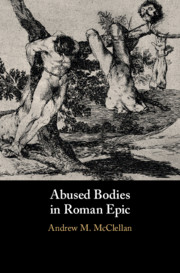Book contents
- Abused Bodies in Roman Epic
- Abused Bodies in Roman Epic
- Copyright page
- Dedication
- Contents
- Preface
- Notes on Texts and Abbreviations
- Introduction
- Chapter 1 Setting the Stage: Corpse Abuse in Homer and Virgil
- Chapter 2 Decapitation in Lucan, Statius, and Silius Italicus
- Chapter 3 Unburied Past: Lucan’s Bellum ciuile
- Chapter 4 Argonautic Abuses: Valerius Flaccus’ (and Apollonius’) Argonautica
- Chapter 5 Funeral ‘Rights’: Statius’ Thebaid
- Chapter 6 Grave Encounters: Silius Italicus’ Punica
- Epilogue A post mortem
- Bibliography
- Index Locorum
- General Index
- References
Bibliography
Published online by Cambridge University Press: 08 July 2019
- Abused Bodies in Roman Epic
- Abused Bodies in Roman Epic
- Copyright page
- Dedication
- Contents
- Preface
- Notes on Texts and Abbreviations
- Introduction
- Chapter 1 Setting the Stage: Corpse Abuse in Homer and Virgil
- Chapter 2 Decapitation in Lucan, Statius, and Silius Italicus
- Chapter 3 Unburied Past: Lucan’s Bellum ciuile
- Chapter 4 Argonautic Abuses: Valerius Flaccus’ (and Apollonius’) Argonautica
- Chapter 5 Funeral ‘Rights’: Statius’ Thebaid
- Chapter 6 Grave Encounters: Silius Italicus’ Punica
- Epilogue A post mortem
- Bibliography
- Index Locorum
- General Index
- References
Summary

- Type
- Chapter
- Information
- Abused Bodies in Roman Epic , pp. 274 - 295Publisher: Cambridge University PressPrint publication year: 2019

